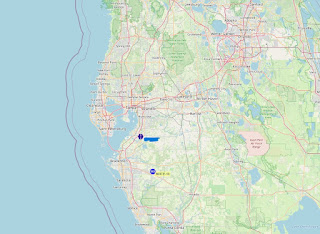
We're learning about rock cycles. What's in a rock? How did it get there? Only God can make rocks. After the initial act of creation, however, how are new rocks formed? How do older rocks make the transition into what we call "soil?"

There are three types of rocks. These are igneous, sedimentary, and metamorphic rocks. They are formed in different ways. I purchased a rock kit that has a few samples of each type of rock. This was very useful as we went through our science text, as well as in our readings from the library. Our library books frequently mention the "fact" that the world is several million years old. Perhaps hundreds of millions of years old, depending on the text. Our LIFEPACS from Alpha Omega, however, are quite clear about the divine origin of the world.

The boys have done the experiments listed in the book and they've all turned out horribly. I could not tell you why. In one experiment, we're to gather some pebbles and soil and shake it up. Allegedly, in a "few minutes" it should settle and we would be able to tell where the rocks land in the mixture. Top, middle or bottom layer? Well, it's been several days and the water is still murky. The pebbles are somewhere in the soil, but I could not tell you where. I could tell you that plant material generally floats, however.
In another experiment, we heated water and put salt into it. Then we set the string into the baby food jars as pictured. We're supposed to get salt crystals. I don't see any yet, and it has been several days. If you have a clue as to why our experiments don't work, let me know. It seems like a lot of effort just to find out that you haven't "proven" anything.
Later, we'll make a volcano with baking soda and vinegar. Who cares what that proves? It's going to be a lot of fun. We also have a rock field trip planned for late next month.


It's always depressing when experiments don't perform the way they're supposed to. Fortunately, most of them work, or work well enough to get the point across.
ReplyDeleteI am sure I must have done something wrong, though I thought I followed the directions. It seems most experiments I did in high school worked that way, too, and I wound up having to look at someone else's experiment to make accurate notes.
ReplyDeleteyou might try rock candy. you can just make it in a container (like a baby food jar) and just leave the lid off. Ours turned out well. You do need to leave it for about 10 days.
ReplyDeleteIt was hard to tell that anything was happening until it was time to drain it. All the crystals were on the bottom and it just looke like the liquid.
Don't you hate when a plan doesn't come together.
Oh, we REALLY wanted to do that, but presently our kitchen is swarming with ants and we don't want to make things worse LOL! The boys were pretty disappointed too.
ReplyDeleteThe ants I've been meaning to post on also. They're no fun.
Hey you could start an ant farm as a school project then. LOL
ReplyDeleteFor the salt crystal experiments you need to make a saturated salt solution.. meaning that the water is that salty that you cant dissolve any more salt in it at all..
ReplyDeletethen the crystals should start to grow on the piece of cotton..
cheers Kim
It sounds like you have some good rock activities going on. We're decomposing sliced bananas right now. It must take awhile, because I don't really notice anything happening. Covering them in yeast is suppose to make them decompose quicker.
ReplyDelete